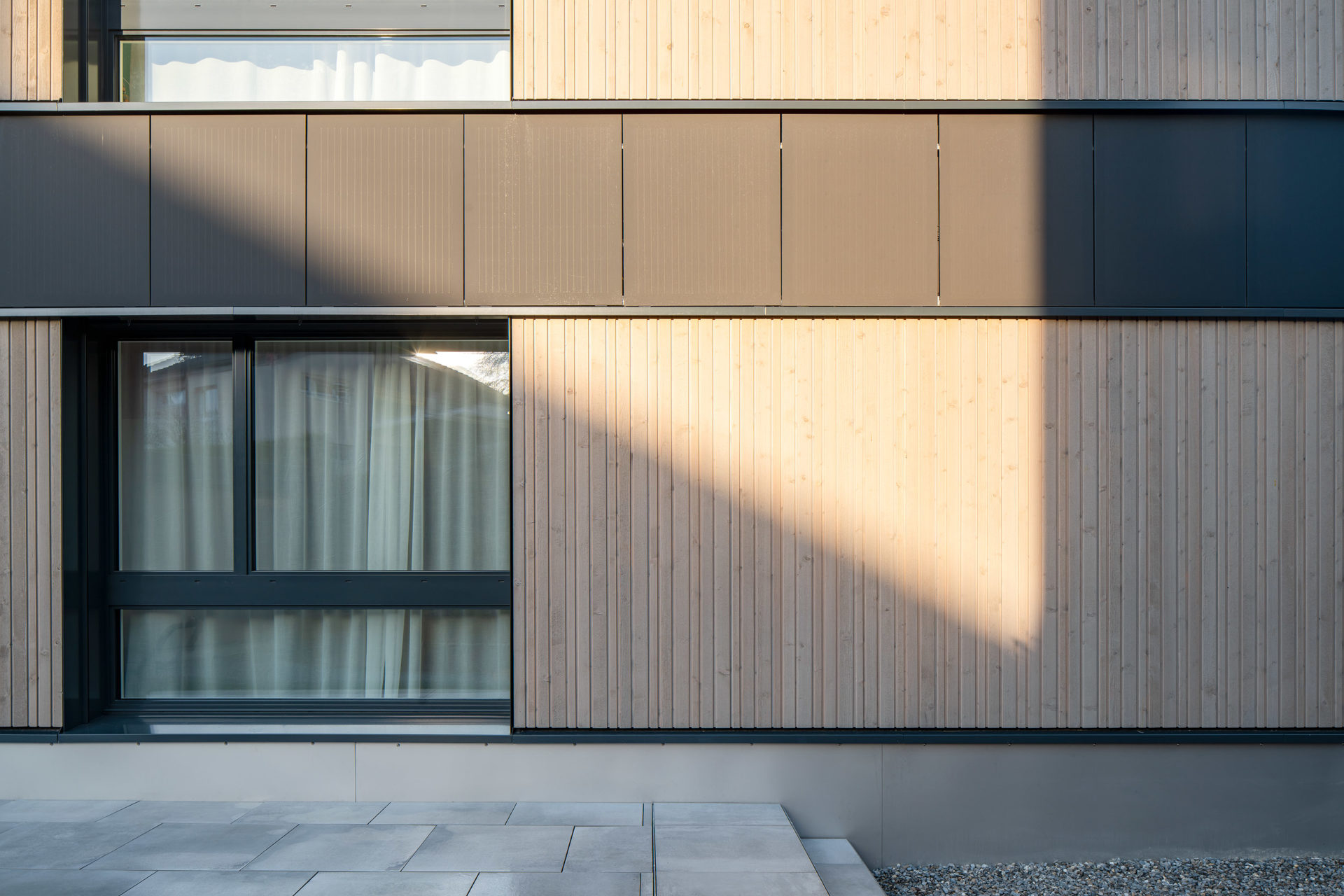26 May 2025

Facade installation in Buochs. Photo: Intelligent Solar.
Author: Elisa Porfido, Solar Energy Specialist, Swiss Federal Office of Energy
Thanks to building-integrated photovoltaics (BIPV), architects, engineers and building and construction specialists can now combine aesthetics and sustainability when designing or renovating buildings.
In a world where changing energy production sources is a priority, BIPV is gaining in importance. Unlike traditional solar systems installed on top of a building, BIPV integrates photovoltaic modules directly into the building envelope. Roofs, facades and balustrades can thus be replaced by active constructive elements. This fusion of technology and architecture transforms the building into a power-generating element, with particular attention paid to its aesthetics. For architects, this means considering orientation, active surfaces, technical constraints and the visual impact of the photovoltaic system right from the design phase.
Finding a solution for every building
Each project requires a tailor-made design based on sunlight, building structure, aesthetic choices and energy efficiency. Whether transparent, coloured, semi-transparent or customizable according to project requirements, photovoltaic solutions are numerous. In this way, BIPV becomes a genuine architectural material, capable of combining energy performance and visual identity. Coupled with technologies such as energy storage or dynamic management systems, it opens the way to buildings that are partially or totally self-sufficient in energy, while complying with current environmental and safety standards. Beyond its aesthetic appeal, this technology offers a holistic approach to building performance, helping to reduce CO2 emissions, optimize energy consumption and intelligently manage electrical flows.
At the crossroads of architecture, engineering and energy, the deployment of BIPV requires close collaboration between architects, engineers, manufacturers and other players in the sector. The success of a project depends on a detailed understanding of available technologies, regulations and digital design tools such as Building Information Modeling (BIM) or energy simulators. By integrating BIPV from the earliest design phases, it becomes possible to create buildings that are both efficient, sustainable and resolutely forward-looking.
Training the solar architects of tomorrow
To meet these challenges and help professionals master BIPV,EPFL (École Polytechnique Fédérale de Lausanne) is launching the CAS (Certificate of Advanced Studies) “Building Integrated Photovoltaics (BIPV)”. This course is jointly organized by the Centre de l’énergie (CEN), the Building2050 Research Support Group (BUILD) and the Photovoltaics and Thin Film Laboratory (PV-LAB) affiliated to EPFL’s Faculty of Engineering Science and Technology (STI), and benefits from the collaboration of CSEM (Centre suisse d’électronique et de microtechnique) in Neuchâtel, enabling it to offer a comprehensive view of the issues linked to energy, architecture and technology.
For more information on the program and how to register, please visit the course web page: www.formation-continue-unil-epfl.ch/formation/bipv-cas/.
SUPSI (University of Applied Sciences and Arts of Southern Switzerland) also offers a number of Solarchitecture – Essentials training courses lasting just a few days, providing an introduction to the subject through visits to buildings in a given city.

